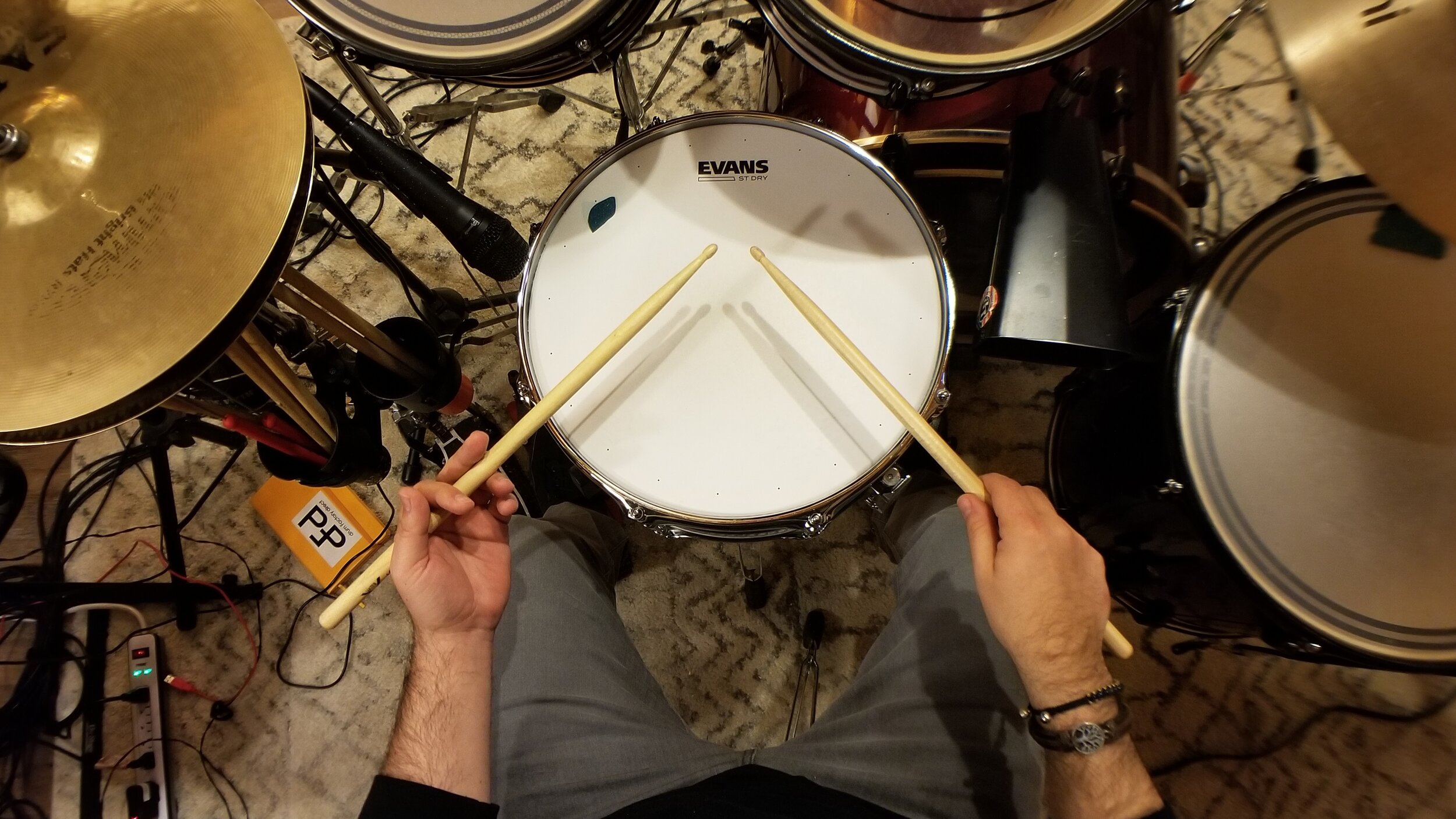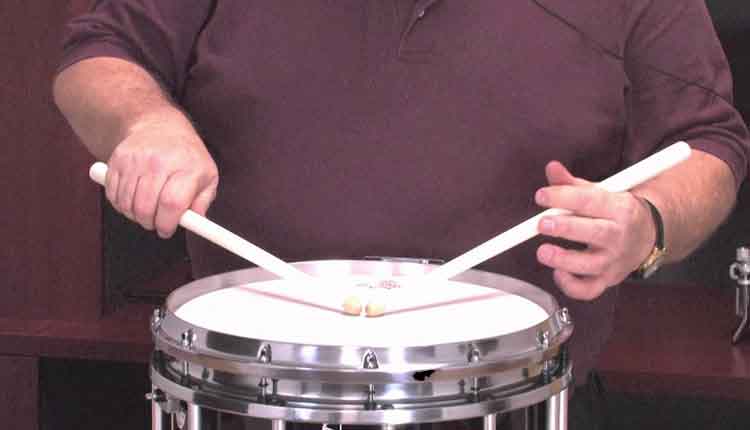Holding a snare drum stick correctly is essential for good drumming. It helps you play better and prevents injury.
Drumming is fun, but it’s important to start with the basics. One of the first skills you should learn is how to hold your drum sticks properly. Holding the sticks the right way affects your control, speed, and overall performance.
Whether you’re a beginner or looking to improve your technique, knowing the proper grip can make a big difference. In this guide, we’ll explore the best ways to hold a snare drum stick. You’ll be on your way to becoming a better drummer with just a few simple adjustments. Let’s get started!

Credit: christianjohnsondrums.com
Choosing The Right Drum Sticks
Choosing the right drum sticks is crucial for any drummer. Your drum sticks will affect your playing style and sound. This guide will help you understand what to look for in drum sticks.
Material And Weight
Drum sticks come in various materials. Wood is the most common. Hickory is popular for its balance and strength. Maple is lighter and good for faster play. Oak is durable but heavier. Each material will feel different in your hands.
Weight is also important. Lighter sticks are easier to control. Heavier sticks give a fuller sound. Choose a weight that feels comfortable for you.
Stick Size And Length
Stick size is marked by numbers and letters. For example, 5A is a common size. Lower numbers mean thicker sticks. Higher numbers mean thinner sticks. Thicker sticks are louder and more durable. Thinner sticks are quieter and easier to handle.
Length affects your reach and control. Longer sticks can reach further on the drum kit. Shorter sticks offer more precision. Your hand size and playing style will guide your choice. Try different lengths to see what works best for you.
Grip Types
Understanding the different grip types for holding a snare drum stick is crucial for any drummer. Each grip type offers unique benefits and can impact your playing style and technique. Here, we explore two main grip types: Matched Grip and Traditional Grip.
Matched Grip
The matched grip is the most common grip type for modern drummers. It offers balance and control. Here’s how to hold the stick using the matched grip:
- Hold the stick with your thumb and index finger.
- Wrap your remaining fingers around the stick.
- Ensure both hands hold the sticks in the same way.
There are three variations of the matched grip:
- German Grip: The palms face down, and the sticks are held at a more parallel angle to the drumhead.
- French Grip: The palms face each other, and the sticks are held more vertically.
- American Grip: A blend of German and French grips, offering a balanced approach.
Choosing the right variation depends on your comfort and playing style.
Traditional Grip
The traditional grip is often used in jazz and marching band drumming. It offers a different feel and control. Here’s how to hold the stick using the traditional grip:
- Hold the left stick between your thumb and index finger.
- Place the stick between your index and middle fingers.
- Wrap your remaining fingers around the stick.
The right hand uses the matched grip. This grip type requires practice to master. Its unique positioning allows for nuanced strokes and dynamics. Many drummers prefer it for its historical significance and distinct feel.
In summary, both grip types have their advantages. Matched grip offers balance and simplicity, while traditional grip provides a unique touch and control. Understanding and practicing both can enhance your drumming versatility.
Finger Placement
Understanding the finger placement on a snare drum stick is crucial for beginners. Proper finger placement ensures better control, precision, and reduces the risk of injury. This section will guide you through the fundamental aspects of finger placement, focusing on the fulcrum point and the role of supporting fingers.
Fulcrum Point
The fulcrum point is where the thumb and index finger meet on the drum stick. This point is essential for balance and control. To find the right spot:
- Hold the stick with your thumb and index finger.
- Ensure the thumb is on one side of the stick.
- The index finger should be directly opposite the thumb.
- Experiment with different positions to find the balance point.
Finding this balance point helps in achieving optimum control and reduces fatigue. Adjust as needed while practicing to maintain comfort and efficiency.
Supporting Fingers
The supporting fingers play a significant role in controlling the stick’s movement. These fingers include the middle finger, ring finger, and pinky. Each finger should lightly touch the stick and work together:
- Middle Finger: Provides additional support and control.
- Ring Finger: Helps with the grip and stability.
- Pinky: Acts as a guide for smooth strokes.
Keep these fingers relaxed but in contact with the stick. Avoid gripping too tightly, as this can cause tension and limit movement.
Use the supporting fingers to guide the stick’s motion and ensure smooth, controlled strokes. Practice regularly to develop muscle memory and improve your drumming skills.

Credit: www.youtube.com
Hand Positioning
Proper hand positioning is crucial for holding a snare drum stick. Your grip affects your control and sound quality. With the correct technique, you will play more efficiently and avoid strain.
Wrist Alignment
Keep your wrist relaxed. Avoid bending it too much. A straight wrist helps maintain control. Keep your forearm and wrist aligned. This position reduces tension. It also improves stick movement.
Thumb Position
Place your thumb on the side of the stick. It should rest gently. Avoid gripping too tightly. Your thumb and fingers should form a loose circle. This grip allows for smooth stick motion. It also increases playing speed and accuracy.
Developing Control
Developing control over the snare drum stick is essential for any drummer. It involves mastering both the mental and physical aspects of drumming. Proper control allows you to play with precision, consistency, and expression. Let’s explore some techniques to help you develop better control.
Relaxation Techniques
One important aspect of developing control is learning how to relax. Tension in your hands and arms can lead to poor performance and even injury. Follow these relaxation techniques to improve your drumming:
- Breathing Exercises: Take deep breaths before and during practice. This helps to release tension.
- Loose Grip: Hold the drumstick with a relaxed grip. Avoid squeezing too hard.
- Shoulder Drops: Frequently drop and relax your shoulders. Keep them loose.
Relaxation is a key part of developing control. Practicing these techniques regularly will help you maintain a relaxed and focused state while drumming.
Finger Exercises
Finger exercises are crucial for improving control and dexterity. These exercises strengthen the muscles in your fingers and help you achieve better stick control. Try incorporating these exercises into your daily practice:
- Finger Taps: Tap each finger on a flat surface. Start slow, then increase speed.
- Stick Rolls: Hold the stick between your thumb and index finger. Roll it back and forth using only your fingers.
- Finger Push-Ups: Place the stick across all fingers. Push it up and down while keeping your wrist still.
Practicing these finger exercises will enhance your control over the snare drum stick. They are simple yet effective ways to improve your technique.
Common Mistakes
Holding a snare drum stick may seem simple, but many drummers make common mistakes. These errors can affect your performance and cause discomfort. Understanding and correcting these mistakes can improve your drumming technique significantly.
Over-gripping
Many drummers make the mistake of over-gripping the stick. This happens when you hold the stick too tightly. It restricts your movement and control.
Over-gripping can lead to hand fatigue. It also reduces the fluidity of your playing. To avoid this, hold the stick loosely. Let it bounce naturally. Your grip should be firm yet relaxed.
Imagine holding a small bird. You need to keep it secure without harming it. That’s how you should grip your drum stick. A loose, relaxed grip allows for better control and speed.
Improper Thumb Placement
Another common mistake is improper thumb placement. Your thumb plays a key role in controlling the stick. Placing it incorrectly can affect your technique.
Ensure your thumb rests along the side of the stick. It should not wrap around or press too hard. This helps in maintaining balance and control.
If your thumb is misplaced, you’ll find it hard to play smoothly. Proper thumb placement ensures the stick moves freely. It also prevents strain on your hand.
Check your thumb’s position regularly. Make small adjustments as needed. This can make a big difference in your drumming.
To sum up, avoid these common mistakes to improve your drumming. A relaxed grip and proper thumb placement are essential. Practice regularly and pay attention to your technique.
Practice Tips
Learning how to hold a snare drum stick properly can make a big difference in your drumming performance. This section will provide you with some practice tips to improve your technique and grip. Let’s dive into two essential tips that can help you hold the drumsticks like a pro.
Slow And Steady
Start practicing at a slow pace. Focus on each movement. This method helps build muscle memory. It also ensures you develop proper technique without rushing. Gradually increase your speed over time. Consistency is key. Practice daily for the best results. Remember, slow progress is better than no progress.
Use A Mirror
Practicing in front of a mirror can be very effective. It allows you to observe your hand position and grip. Make sure both hands look symmetrical. Adjust your technique if you notice any inconsistencies. This method can help you correct mistakes and improve your overall form. A mirror can be your best guide.
Advanced Techniques
Advanced techniques for holding a snare drum stick can elevate your drumming. These methods can help you play faster and with more precision. Let’s explore some of these advanced techniques.
Moeller Method
The Moeller Method is a dynamic way to hold the stick. It uses a whipping motion. This technique helps you play louder with less effort. Start by holding the stick loosely. Use your wrist and forearm to create a whip-like motion. This technique is great for powerful accents and rolls.
Finger Control Method
The Finger Control Method focuses on finger movement. This technique allows for precise control. Hold the stick lightly with your fingers. Use each finger to guide the stick’s movement. This method is excellent for fast and intricate patterns. Practice slowly, then increase speed as you get comfortable.

Credit: banddirector.com
Frequently Asked Questions
How Should Beginners Hold A Snare Drum Stick?
Beginners should hold the snare drum stick using a matched grip. Place the stick between your thumb and index finger. Ensure your grip is firm but relaxed to avoid tension.
What Is The Correct Snare Drum Stick Grip?
The correct grip for a snare drum stick is the matched grip. Hold the stick between your thumb and index finger, and wrap the other fingers around it.
How Do I Avoid Tension In My Hands?
To avoid tension, keep your grip relaxed. Avoid squeezing the stick too tightly. Practice regularly to develop muscle memory.
Is Finger Placement Important For Snare Drum Stick Grip?
Yes, finger placement is crucial. The stick should rest comfortably between your thumb and index finger. The remaining fingers should gently wrap around the stick.
Conclusion
Holding a snare drum stick correctly makes a big difference. Practice your grip daily. It helps improve your drumming skills. Remember to relax your hands while playing. This prevents strain and injury. Consistency is key to becoming better. Watch videos or take lessons for more tips.
Enjoy the process and keep drumming. Your technique will get better with time. Happy drumming!
